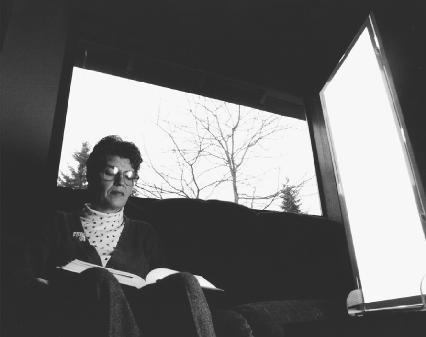Seasonal Affective Disorder - Treatment
One obvious way to treat SAD is to expose a patient to a greater amount of light. One device used for this purpose is a light box. A light box contains a set of lights in front of a reflector. The light produced by this device is about fifty times as bright as ordinary indoor light. The patient sits next to the light box for about thirty minutes each session. The light box replaces a portion of the natural light that is absent in the winter months.
Light therapy is generally considered safe for most people. However, it may be harmful to people with eye disorders. The most common side effects of using a light box are vision problems, such as eye strain; headaches; irritability; and insomnia. In addition, a person may experience an excited mood after using the light box.
It's easy to take the common things in life for granted. Sunlight is an example. We are so used to seeing sunlight that we may not realize how important it is to health. For example, sunlight helps the production of vitamin D in the skin. Vitamin D prevents bone disease.
One of the first scientists to study the effects of light on health was Niels Tyberg Finsen (1860–1903). Finsen was born in the Faroe Islands in the North Atlantic Ocean. The Faroe Islands are close to the Arctic Circle. They receive relatively little sunshine throughout the year.
When Finsen became a doctor, he decided to study the effects of ultraviolet light on biological tissue. He became convinced that light can be used to treat human disease. He invented a powerful lamp for the treatment of lupus vulgaris, a skin disorder. The lamp was called the Finsen light in his honor.
Some of Finsen's ideas were incorrect. For example, he mistakenly thought that light could be used to cure smallpox. But, overall, his research was very important. It led the way to using many forms of radiation, including X rays and gamma rays, to treat human disorders. For his work in this field, Finsen was awarded the 1903 Nobel Prize in medicine and physiology.
Another possible treatment for SAD that is being studied is injections of melatonin. Some researchers think that the hormone might help the body adjust to longer periods of darkness without causing depression.
Seasonal affective disorder may also respond to medication. The four classes of drugs used for the disorder are:
- Heterocyclic antidepressants (HCAs), such as amitriptyline (trade name Elavil)
- Selective serotonin reuptake inhibitors (SSRIs), such as fluoxetine (trade name Prozac), paroxetine (trade name Paxil), and sertraline (trade name Zoloft)
- Monoamine oxidase inhibitors (MAO inhibitors), such as phenelzine sulfate (trade name Nardil) and tranylcypromine sulfate (trade name Parnate)
- Lithium salts, such as lithium carbonate (trade name Eskalith), often used by people with bipolar disorder

Counseling
Counseling can sometimes help people with SAD, by helping patients understand the cause of their disorder and how it can affect their interaction with other people.

Comment about this article, ask questions, or add new information about this topic: